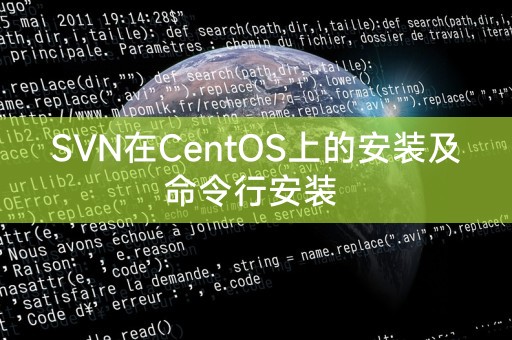
php editor Apple introduces you to the method of installing SVN on CentOS system. SVN is an open source version control system that can help teams collaborate on development, manage code versions, and improve development efficiency. Installing SVN on CentOS is very simple and can be done with just a few commands. The following will introduce you to the SVN installation steps and common command line operations in detail.

There are many ways to install SVN on CentOS. Two common installation methods will be introduced below.
1. Open the terminal and log in as the root user.
2. Run the following command to update the system package list:
```
yum update
3. Run the following command to install SVN:
yum install subversion
4. After the installation is complete, you can verify whether SVN was successfully installed by running the following command:
svn --version
2. Run the following Command to install compilation tools and dependent libraries:
yum groupinstall "Development Tools"
yum install zlib-devel openssl-devel sqlite-devel bzip2-devel
3. Download SVN Source code package:
wget -1.14.1.tar.gz
4. Unzip the source code package:
tar -zxvf subversion-1.14.1.tar. gz
5. Enter the decompressed directory:
cd subversion-1.14.1
6. Configure and compile the source code:
./configure
make
make install
7. After the installation is complete, you can verify whether SVN is successfully installed by running the following command:
SVN provides some commonly used Command line tools, some common command line installation methods will be introduced below.
To create a new SVN repository, you can use the `svnadmin create` command. To create an SVN repository named `myrepo` in the `/var/svn` directory, you can run the following command:
```
svnadmin create /var/svn/myrepo
To import a project into the SVN warehouse, you can use the `svn import` command. To `/home The projects in the /user/myproject` directory are imported into the `myrepo` warehouse. You can run the following command:
svn import /home/user/myproject file:///var/svn/myrepo -m "Initial import"
To check out a project from the SVN warehouse, you can use the `svn checkout` command. To check out the project in the `myrepo` warehouse to the `/home/user/working_copy` directory, you can Run the following command:
svn checkout file:///var/svn/myrepo /home/user/working_copy
To update the project in the SVN repository, you can use the `svn update` command, To update the project in the `/home/user/working_copy` directory, you can run the following command:
svn update /home/user/working_copy
To commit the changes to the SVN repository, you can Using the `svn commit` command, to submit the changes in the `/home/user/working_copy` directory to the warehouse, you can run the following command:
svn commit /home/user/working_copy -m "Commit message "
To view the logs of the SVN repository, you can use the `svn log` command. To view the logs of the `myrepo` repository, you can run the following command:
svn log file:///var /svn/myrepo
Installing SVN on CentOS is a very practical operation. It can help the team better manage and track changes during the software development process. By using SVN’s command line tool, you can easily You can create warehouses, import projects, check out projects, update projects, submit changes and view logs. SVN is a very powerful and flexible version control system. I hope this article will be helpful to you.
The above is the detailed content of SVN installation on CentOS and command line installation. For more information, please follow other related articles on the PHP Chinese website!




